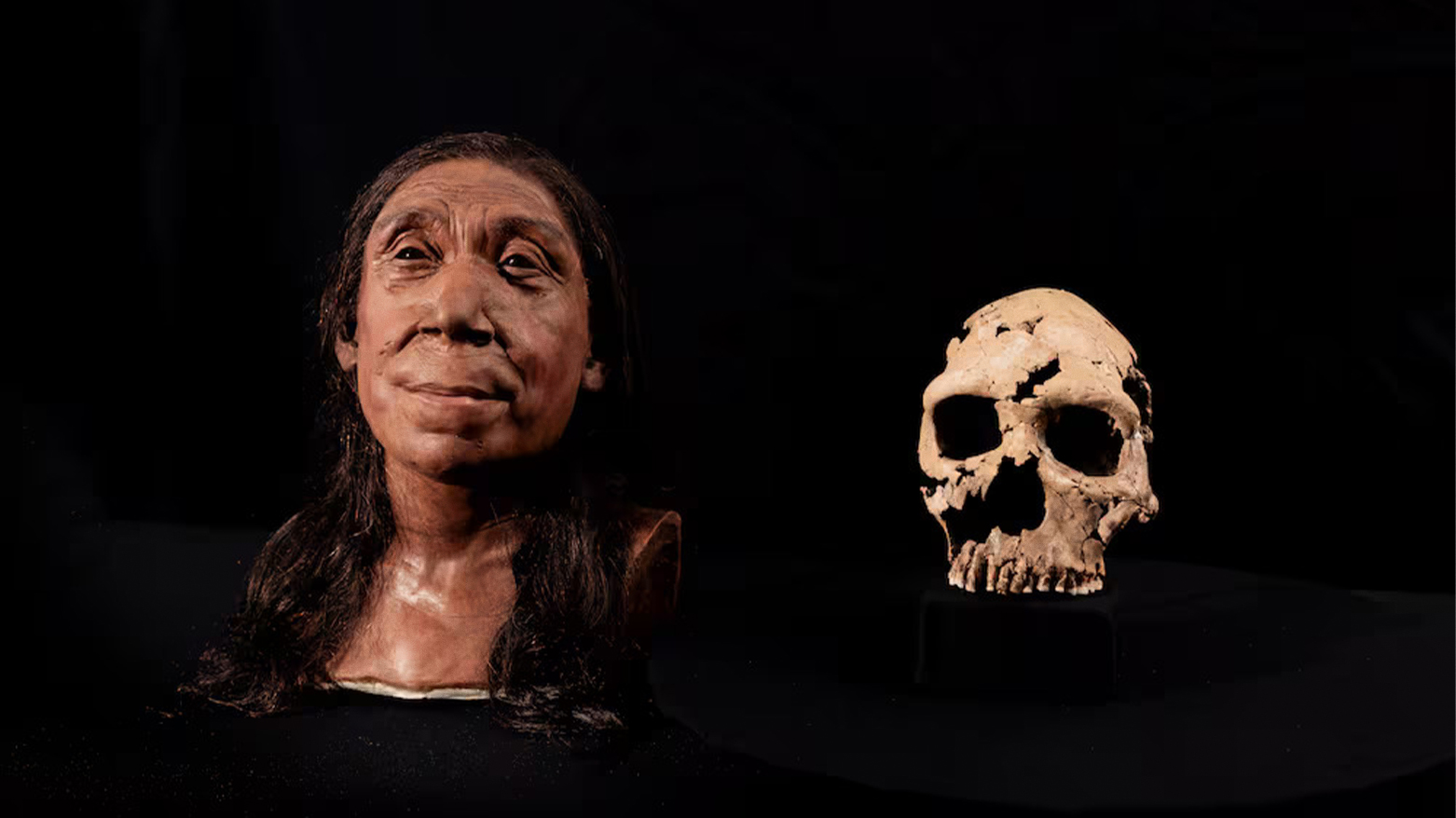Reconstruction of Neanderthal woman Shanidar Z garners global attention
In 2018, a team of researchers from the University of Cambridge embarked on an excavation expedition to Shanidar Cave in the Kurdistan Region, a site renowned for its significance in Neanderthal research.

ERBIL (Kurdistan 24) - The unveiling of the reconstructed face of a 75,000-year-old Neanderthal woman, Shanidar Z, has sparked international interest and ignited discussions about human evolution, cultural practices, and the interactions between Neanderthals and modern humans.
In a groundbreaking revelation, the University of Cambridge has unveiled the reconstructed face of a Neanderthal woman named Shanidar Z, shedding new light on the lives and behaviors of our ancient ancestors.
This extraordinary discovery, made possible through meticulous excavation and cutting-edge scientific techniques, has captivated researchers and the public alike, challenging longstanding perceptions of Neanderthals as primitive beings.
Cambridge University's Groundbreaking Excavation
In 2018, a team of researchers from the University of Cambridge embarked on an excavation expedition to Shanidar Cave in the Kurdistan Region, a site renowned for its significance in Neanderthal research.

This cave gained prominence in 1960 with the discovery of multiple Neanderthal remains, hinting at intentional burial practices among these ancient hominids.
Insights from Diverse Sources
CNN reports that Shanidar Z's excavation yielded groundbreaking discoveries, including innovative techniques to determine her sex and estimate her age at the time of death.
Despite doubts over the flower burial theory, evidence suggests a sophisticated Neanderthal society, challenging earlier perceptions of them as primitive beings.

Shanidar Z's discovery provides valuable insights into Neanderthal society and culture.
While the theory of flower burials, initially proposed in the 1950s by archaeologist Ralph Solecki, has been subject to debate, evidence suggests complex funerary rituals practiced by Neanderthals.

Recent research indicates the presence of charred food in nearby soil, indicating that Neanderthals not only prepared and cooked food but also did so in the proximity of their deceased, highlighting a sense of community and empathy within their society.
Scientific Breakthroughs
According to the Archaeological Institute of America, scientists meticulously reconstructed Shanidar Z's fragmented skull, utilizing advanced methods such as tooth enamel protein analysis and CT scanning.

The lifelike model, which has resemblance to the modern humans than previously thought, sheds new light on human evolution and potential interbreeding between Neanderthals and modern humans.
Challenging Perceptions
CBS News highlights how Shanidar Z's discovery challenges preconceived notions of Neanderthals as brutish and unsophisticated. Dr. Emma Pomeroy of Cambridge University emphasizes the importance of understanding Neanderthals' humanity through this remarkable find.

Global Recognition
The London based “New Scientist” website celebrates Shanidar Z as one of the most significant Neanderthal discoveries in recent years, offering valuable insights into their life and behavior.
The Telegraph emphasizes the striking similarity between Neanderthals and modern humans revealed by Shanidar Z's reconstruction, potentially explaining interbreeding between the two species.
Cultural Implications
Asharq al-Awsat discusses how Shanidar Z's discovery challenges previous notions and suggests a closer resemblance between Neanderthals and modern humans. This finding, featured in the documentary "Secrets of the Neanderthals," produced by the BBC, provides insights into interbreeding between the two species.
Scientific Rigor
Wion News praises the meticulous research led by Cambridge and Liverpool John Moores universities, underscoring the potential to challenge longstanding perceptions of Neanderthals.
Sky News highlights additional discoveries in Shanidar Cave, shedding light on Neanderthals' dietary habits and cultural practices.
Technical Precision
BBC News recounts the intricate process of reconstructing Shanidar Z's skull, describing it as "as flat as a pizza." The painstaking efforts led by Professor Graeme Barker showcase the dedication to preserving and understanding our ancient ancestors.
Evolving Perspectives
The Independent reflects on how Shanidar Z's discovery challenges earlier perceptions of Neanderthals and enriches our understanding of human evolution.
The Debrief underscores the significance of Shanidar Z's reconstruction, offering valuable insights into Neanderthal life and death.
Complex Research Endeavors
The National delves into the meticulous process of extracting and reconstructing Shanidar Z's remains, highlighting the interdisciplinary collaboration and technical precision involved in this groundbreaking endeavor.
The excavation efforts, led by a collaborative team from Cambridge and Liverpool John Moores universities, culminated in the discovery of Shanidar Z's fragmented skull. Through innovative techniques such as tooth enamel protein analysis and CT scanning, researchers were able to reconstruct her face with unprecedented accuracy. The lifelike model, crafted by paleoarchaeologists Adrie and Alfons Kennis, offers a striking portrayal of a Neanderthal woman who lived approximately 75,000 years ago.

Conclusion
The reconstruction of Shanidar Z's face marks a milestone in our quest to understand the complexities of human evolution and the shared history between Neanderthals and modern humans. As researchers continue to unravel the mysteries of Shanidar Cave, Shanidar Z's story serves as a poignant reminder of our shared evolutionary journey.
